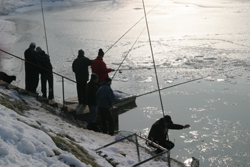Preparing communities for Arctic warming
In the Barents sea, the Arctic ocean north of Norway and Russia, the temperature is anomalously warm for its latitude. This is maintained by a variety of processes. As the heat flux in the region changes, so does the marine ecosystem. This marks the start of a process which will see changes in species composition, distribution and migration of commercially important fish species. In the region of northern Norway, which was the topic of study of the ASOF-N project, there exists an economic, social and cultural heritage built upon these fertile fishing grounds. As these conditions change, it is important that communities are informed in advance so that they have time to adapt. ASOF-N scientists observed and recorded the changes which are occurring in the region. The aim was to understand the controlling processes at work in this high latitude area. The measurements recorded showed a great variability of heat flux to the Barents sea. The data collected was also compared with models with predictive capability. The findings were then disseminated to decision takers and the general public. Talks took place and fishing organisations were briefed on the content and conclusions. Articles were written in local newspapers and specialised publications and a leaflet was produced and disseminated. Another initiative geared at the general public was organised so that school teachers were briefed on how they can explain this information to their students and talks took place at universities. A report was also produced which was distributed at high level conferences, with the aim of informing decision takers. The report provided background for the Arctic Climate Impact Assessment and reports produced by the ICES, the International Council for the Exploration of the Sea.



